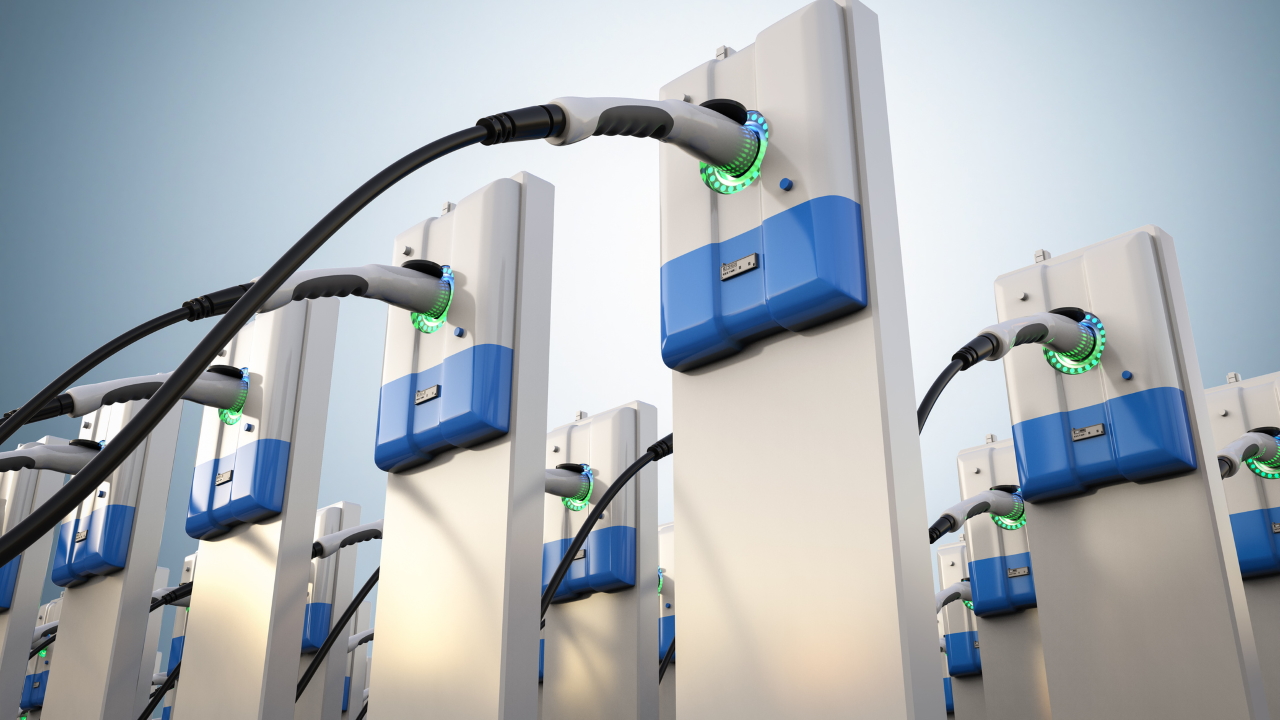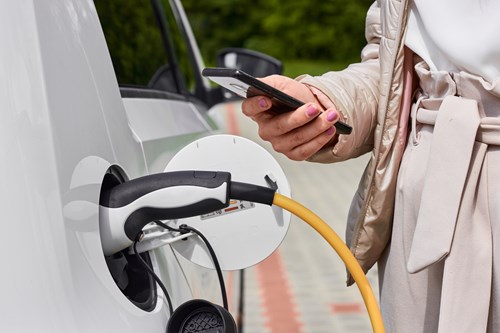
In response to the deepening climate crisis, governments around the world are pledging to drastically reduce emissions. In the UK, as is the case for many other countries worldwide, transport is the largest emitting sector of the economy, responsible for 27% of greenhouse gas emissions, 55% of which comes from cars. So, as the UK government commits to net-zero carbon emissions by 2050, and with other countries following suit, it seems reasonable that policies should target the transport sector first.
Of course, the parking industry is heavily intertwined with the transport sector, and as such it will have a huge role to play in decreasing emissions: by reducing search traffic in congested city centers and integrating with the mobility ecosystem, encouraging transit and last-mile solutions, incorporating green construction techniques and supporting electric vehicles. Boosting EV adoption and infrastructure comes to the fore of many government policies aimed at reducing carbon emissions, and it is here that the parking industry can make an impact.
During our latest Quick Question videos, we asked parking experts how our industry could help governments meet their targets for EV adoption and they didn’t disappoint us with their solutions. From the implementation of charging infrastructure to the streamlining of payment solutions, it seems that there is much that the parking industry can do. So what challenges lie ahead and how can the industry work together to overcome them?
Overcoming Range Anxiety
As automakers continue to improve the storage capacity of EV batteries they do much to reduce range anxiety. But combatting range anxiety goes beyond battery life - improving charging infrastructure will be essential for increasing EV adoption.
Drivers of non-electric vehicles can rely on a well-established network of filling stations, and whilst EV charging stations are becoming more commonplace, the EV driver still needs to plan ahead to ensure that their car is adequately charged before, during, and after their journey. To make charging easier, governments around the world are looking to increase the number of public charging points by a factor of 10 by 2030. And this is where parking operators, with their vast amount of real estate, can step up. By increasing the EV charging facilities available in their parking lots and garages, parking operators can make charging easier than filling up a non-electric vehicle, helping to boost EV ownership.
Creating EV Charging Availability Through Enforcement
Available EV charging stations are frequently misused, either by non-electric vehicles or EVs that no longer require charging, and this contributes to the misconception that EV charging infrastructure is not able to sustain the current EV numbers. But with proper enforcement policies in place and the technologies to support them, it is possible to make existing EV charging spaces available to those that require them, when they need them. Once this perceived shortage is addressed, EV ownership will become more desirable, and at that point, parking facilities will need to increase the charging stations available to accommodate widespread adoption.
Aligning Parking and EV Charging Payment

Paying for charging has long been a source of irritation for the EV charging community, with drivers needing to download various apps and carry numerous cards to use the range of chargers they might encounter on their journey. To increase EV ownership, payment needs to be simplified and drivers need to be provided with a variety of options.
There are four options when it comes to EV charging payments:
- Apps – drivers download an app, create an account and link it to a payment account. Then, they either scan a QR code or link it via RFID/NFC or geolocation. In this way, they can charge their vehicle and simply drive away
- eCommerce payment through a mobile website - this is a good option for ad-hoc payment. Or drivers can register an account to pay more easily in the future.
- Connected car – it is now becoming more common to pay for parking, and indeed charging, through the infotainment unit of the car.
- Lease cars can include charging as part of the agreement by either including charging in the monthly installments or invoicing the EV owner at the end of the month.
To make the process even smoother, EV drivers should be able to pay for parking and charging simultaneously. And, to help relieve anxiety, it would be beneficial to offer drivers the opportunity to reserve charging.
Integrating EV Charging with Parking and the Mobility Ecosystem
EV charging needs to be convenient for drivers and this becomes possible when the driver no longer needs to alter their journey to visit a filling station. Charging stations, therefore, need to be available at parking facilities. But there is more to it than that - as parking assimilates with the wider mobility ecosystem, electric vehicles need to take center stage, especially if governments are to meet their net-zero targets. By promoting the electrification of other modes of transport, such as last-mile solutions, taxis, and buses it is possible to make an EV ecosystem. Once this happens, EV becomes the norm, and the need to conform will drive the EV revolution forward. So by working with the wider mobility sector, parking can play its part in the bigger picture.
A Big Expense
Although the cost of EVs is falling, the initial expense is a barrier to many drivers. Governments could look to provide incentives for first-time EV buyers, and electro-mobility service providers can offer charging rates that are attractive when compared to the cost of gasoline. But is there anything that the parking industry could do to help offset the initial cost of EVs?
Whilst it’s surely not a popular solution, could reduced-rate or even free parking for EV drivers help increase ownership? Or would doing so limit interest amongst the parking industry to provide the necessary infrastructure for large-scale adoption of EVs. In the long-term, once EV charging becomes mainstream, monetization will be crucial, just as it is with parking. But perhaps there will be a new way to look at it once the market becomes established. Perhaps, instead of outsourcing charging point operators, parking operators could take EV charging in-house?
EVs - A Silver Bullet?
Now, in terms of net-zero goals, electric vehicles may not be the silver bullet that governments are hoping for. The initial manufacturing of the vehicles is not the cleanest process and batteries require rare elements such as lithium and cobalt, which raises environmental and ethical issues for the countries where these elements are mined. Moreover, the electricity used to charge vehicles needs to be considered because if it isn’t low-carbon power then it somewhat undermines the ecological benefit of going electric in the first place.
Perhaps this isn’t the parking industry’s responsibility right now, but when working with electromobility service providers it could pay off to partner with those that provide low carbon electricity to their chargers. And, if drivers could guarantee that they were charging their vehicles with green energy, surely that would only drive adoption further. But, perhaps before we reach that stage there needs to be a complete energy revolution!
What’s The Outlook for the EV Revolution?
The Global EV Outlook 2021 presents a hopeful future for accelerated EV adoption. In 2020, whilst Europe’s car market contracted by 22% overall, new electric car registrations more than doubled to 1.4 million representing a sales share of 10%. In the large markets, Germany registered 395 000 new electric cars, France registered 185 000, and the United Kingdom more than doubled its registrations to reach 176 000. Electric cars in Norway reached a record high sales share of 75%, up about one-third from 2019. Sales shares of electric cars exceeded 50% in Iceland, 30% in Sweden, and reached 25% in the Netherlands. [IEA (2021), Global EV Outlook 2021, IEA, Paris https://www.iea.org/reports/global-ev-outlook-2021]
Such figures are certainly encouraging but there is much more to be done before governments can meet their targets for EV adoption and reach their net-zero goals. Of course, the parking industry does not shoulder the responsibility of the EV revolution alone. Automakers should continue to improve electric vehicles, governments could consider greater incentives for EV owners and infrastructure ministries will need to address the issue of charging for long-distance journeys. But, with the continued support of the parking and mobility sectors, the EV revolution can take off and maybe even those government targets stand a chance.
What do you think - is it wishful thinking? Or is there something we missed? Get in touch to let us know!



